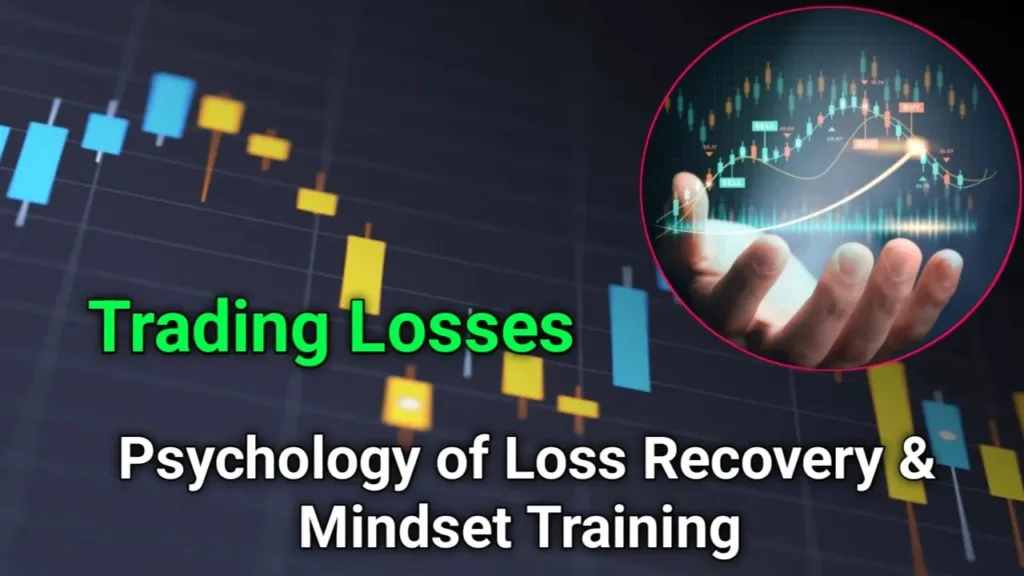
Introduction
Losing money in the markets can feel personal. But it’s how you respond mentally that truly determines your recovery. This guide—Psychology of Loss Recovery: Coping & Mindset Training—will help you rebuild not just your account balance, but your confidence and clarity. These strategies are meant for sustainable growth, not overnight fixes. If you’re ready to regain control and make smarter decisions again, let’s begin together.
Loss Triggers Emotional, Not Rational, Response
Our brain treats losses more acutely than gains. A $1 loss often feels worse than a $1 gain feels good. This is why, after a downturn, you might find yourself holding losing trades too long or chasing your money back in frustration. Next time, pause and ask: “What did I learn from this trade?” rather than “Why did I lose?” Remember: losses are feedback, not failure.
Recognizing Emotional Traps
There are a few common mental pitfalls after a loss:
- Fear and Greed: These can cloud judgment and prompt rushed trades.
- Sunk-Cost Fallacy: Feeling the need to recover losses quickly, often ending in more mistakes.
- Disposition Effect: You might be holding onto losers, hoping they bounce, and selling winners too fast. Survival here means noticing and managing these emotional patterns.
Step 1: Give Yourself Space
Big losses are tough. Here’s how to process them:
- Pause trading for a day or two—don’t force a comeback.
- Reflect quietly: What happened? How did you react? What will you change?
- Reframe the loss: This isn’t proof you’re a poor trader—it’s a costly lesson. Over time, your trading tuition pays you back in skill.
Giving space prevents emotional decision-making from taking over.
Step 2: Build Mental Resilience
Consistent routines help stabilize your mind:
- Mind Reset Ritual: After a tough session, take a short walk or breathe deeply. Journal one thing you did well, one thing to improve, and reaffirm your commitment to your process.
- Micro-Breaks: Stretch and breathe every 60–90 minutes during trading. These little pauses help you stay calm and reset emotional spikes.
- Mental rehearsal: Visualize sticking to your plan, trading calmly, and handling mistakes without panic.
- Community support: Talk to fellow traders or mentors who understand the grind. Feeling understood goes a long way.
These habits turn emotional resilience into a daily practice.
Step 3: Focus on Process Over Profits
Success in trading isn’t measured by daily wins—it’s about consistent execution. After a loss, instead of thinking “I lost money today,” ask yourself:
- Did I follow my entry rules?
- Did I respect my stop-loss?
- Did I journal honestly afterward?
If you answer “yes” to those, you actually won today, even if the P/L says otherwise. Over time, smart habits build trust, and trust builds returns.
Step 4: Rebuild Carefully
Jumping back in with full-force is tempting but risky. Here’s a safer path:
- Trade smaller position sizes than usual—maybe only 50% risk.
- Set a daily loss limit—if you hit it, stop trading for the day.
- Practice on demo accounts or micro-accounts to rebuild confidence without pressure.
- Do a weekly review: Were entries disciplined? Did emotions take over? How will you improve?
This cautious, structured approach helps you regain control while preserving your capital and mindset.
Step 5: Celebrate Discipline
Winning isn’t just about money—it’s about control. Reward yourself for:
- Following the plan despite pressure
- Exiting on stop-loss rather than hoping
- Stepping away when tempted to revenge-trade
Each disciplined choice proves your strength. These small wins reinforce the belief that you are capable of smart, patient trading.
FAQs
Q1: How long does it take to recover mentally from a loss?
Many traders feel more confident within 2–4 weeks if they stick to journaling, micro-breaks, and disciplined routines.
Q2: Do I really need to journal?
Absolutely. Journaling is like having a personal trading coach—every emotional trigger and rule-break becomes awareness to improve your strategy.
Q3: Should I avoid trading after a loss?
Only until you feel emotionally steady. If you’re anxious or fixated on recouping, take a break and return when calm.
Q4: What if I repeat the same mistakes?
That’s your cue to seek support—consider talking to a mentor, joining a peer group, or engaging a trading coach.
Q5: Is loss aversion normal?
Yes—it’s a universal human bias. Acknowledging it reduces its power over your trades.
Final Thoughts
Recovering from losses isn’t just about technical skill—it’s a psychological journey. By reframing losses as lessons, pausing to reset, building emotional routines, focusing on your process, and acknowledging your inner strength, you cultivate the mindset that supports long-term success. The journey won’t be easy, but each step forward is progress.
This guide—Psychology of Loss Recovery: Coping & Mindset Training—offers a structured, empathetic roadmap to rebuild not just your portfolio, but your confidence and calm. Start small, stay resilient, and trust that every setback is shaping you into a wiser, stronger trader.
Read More :-How to Invest In Share Market – A Complete Beginner’s Guide
